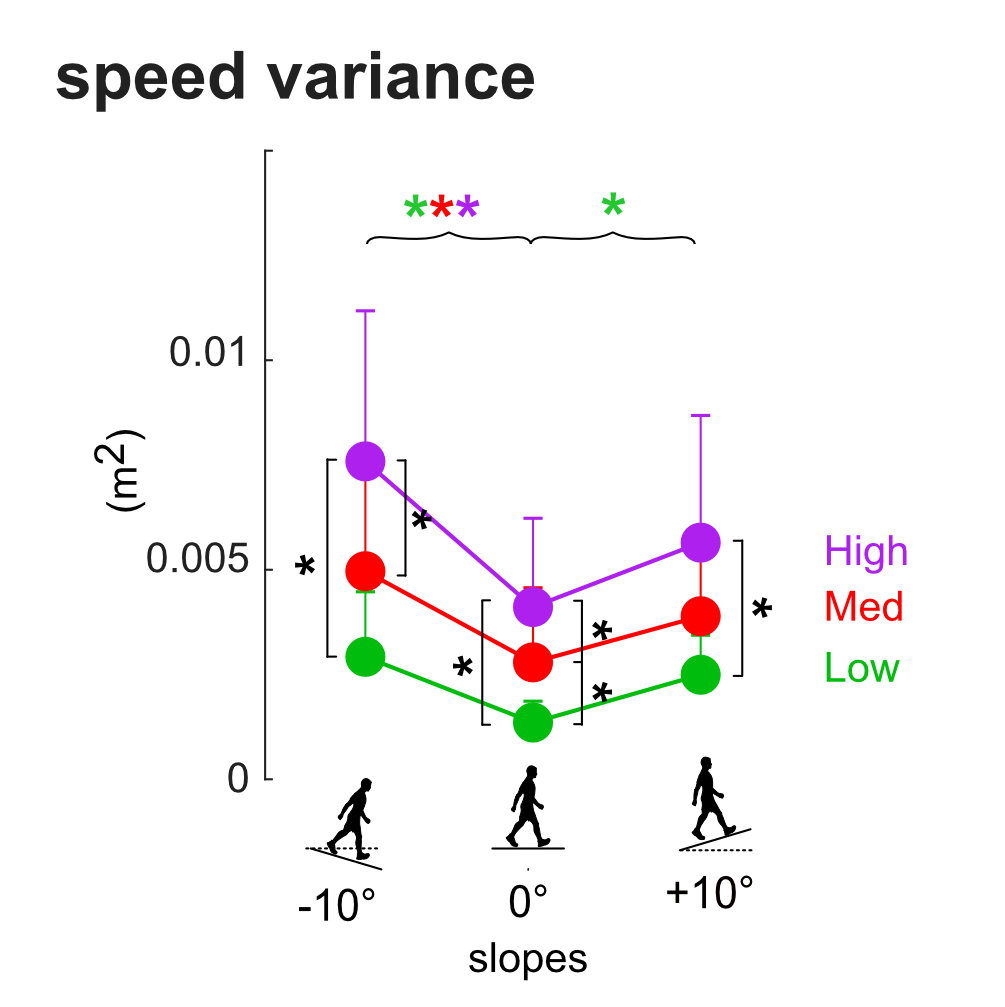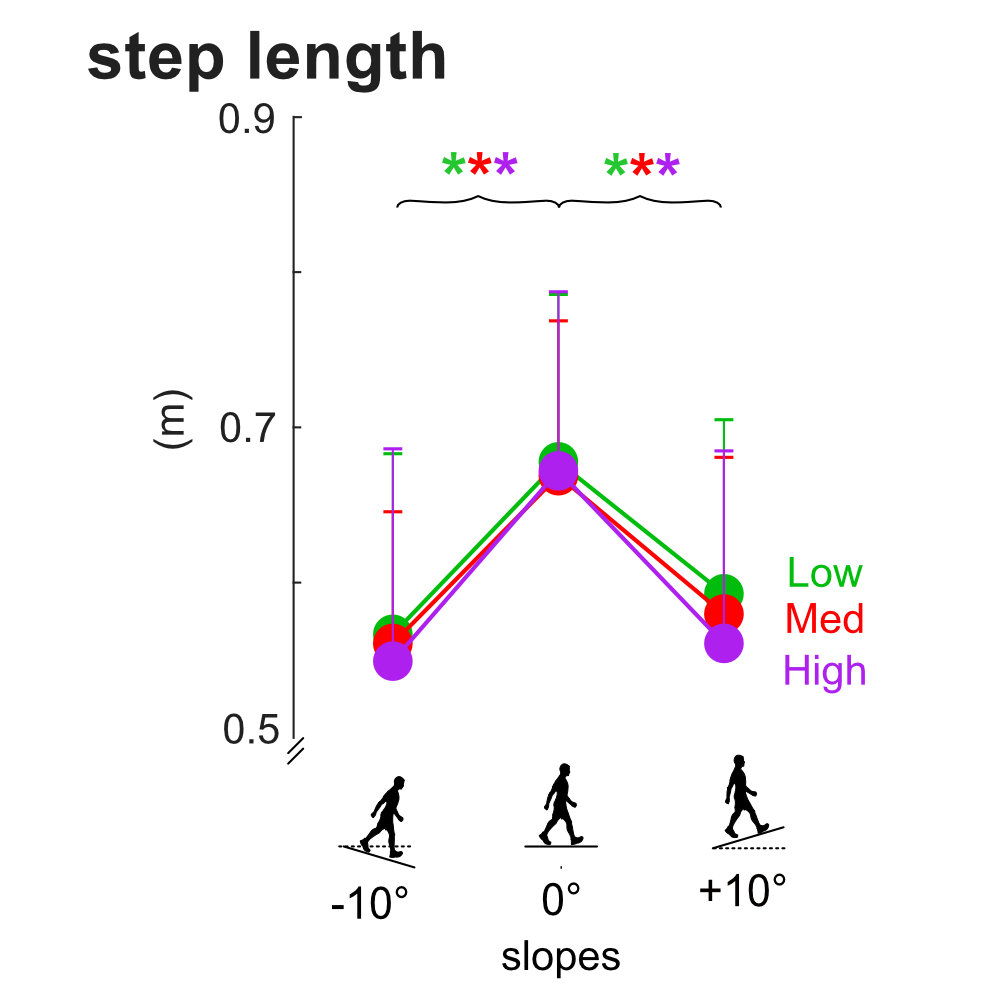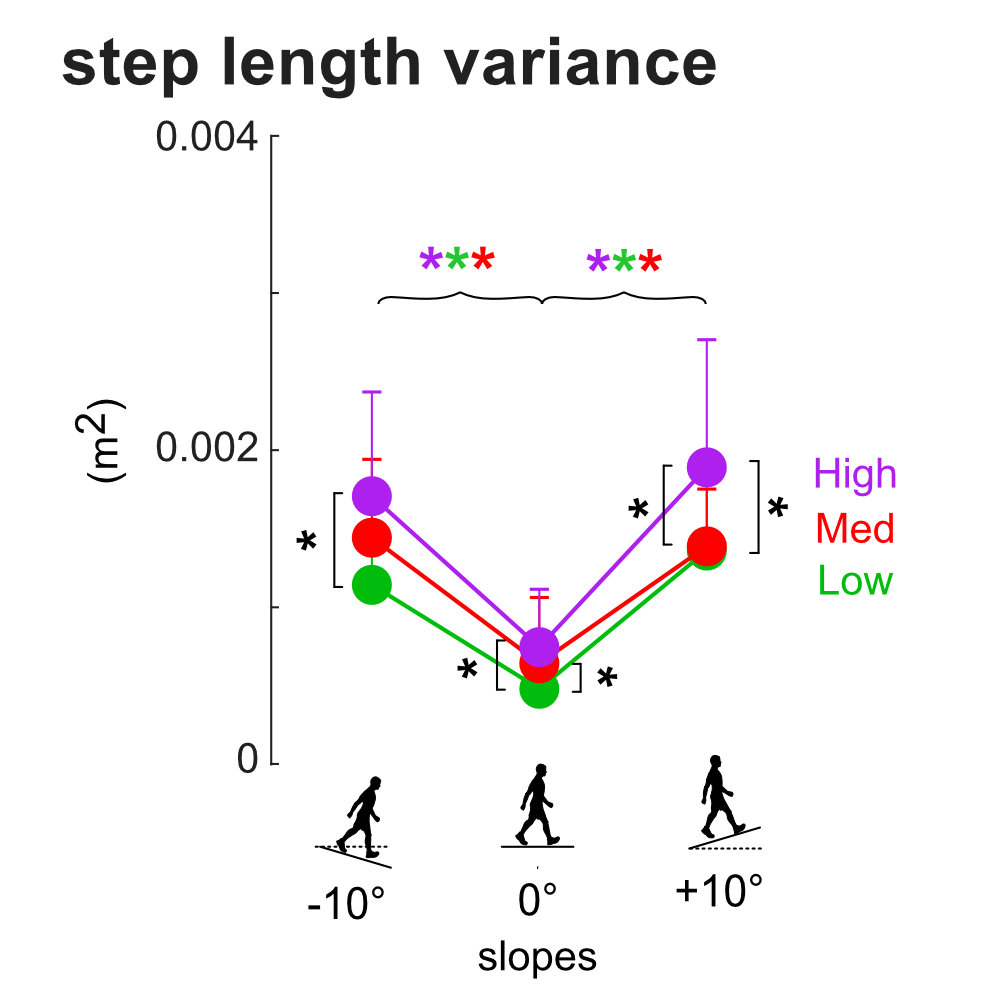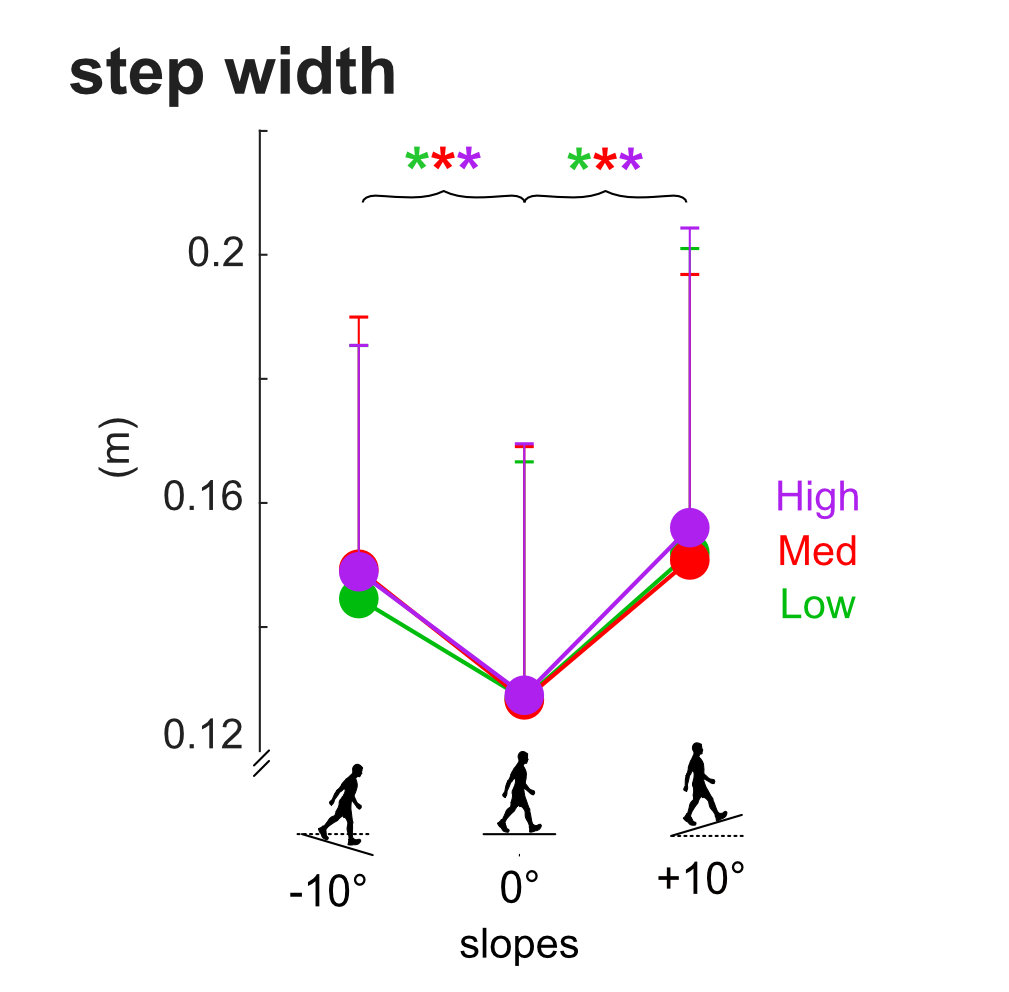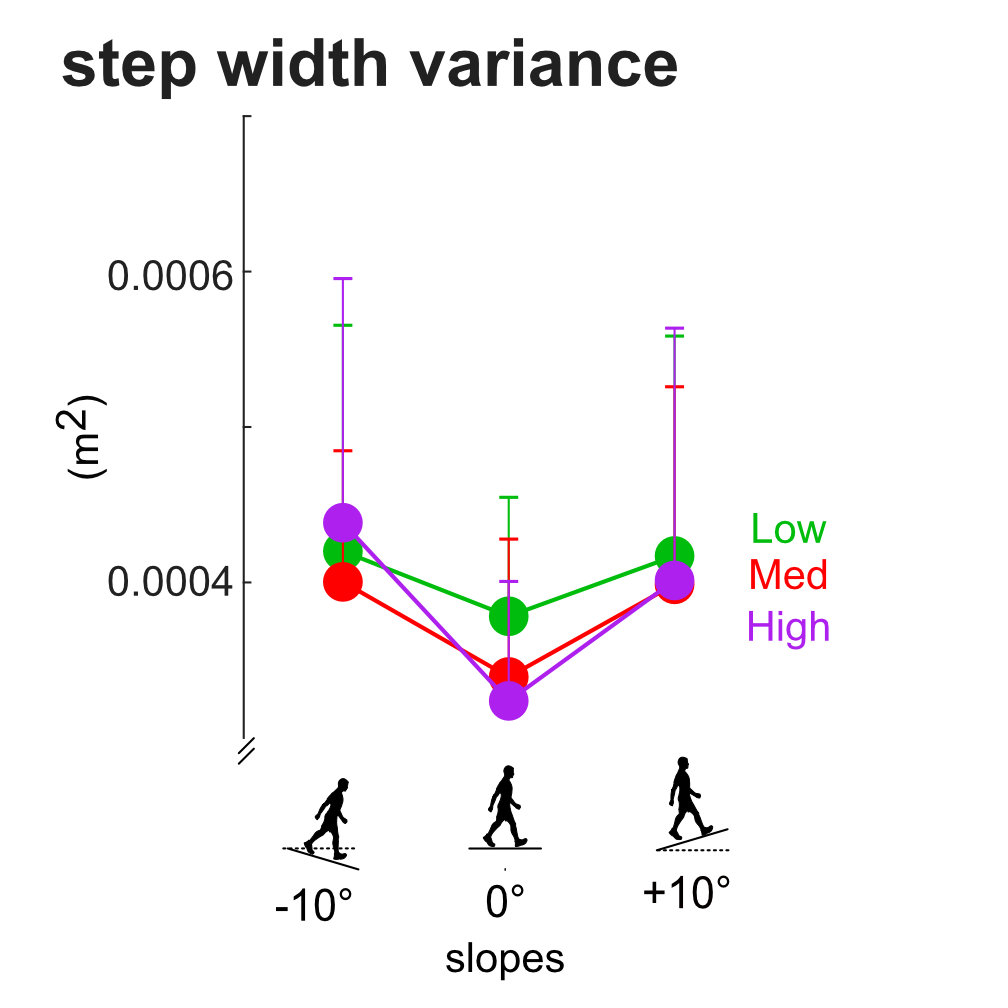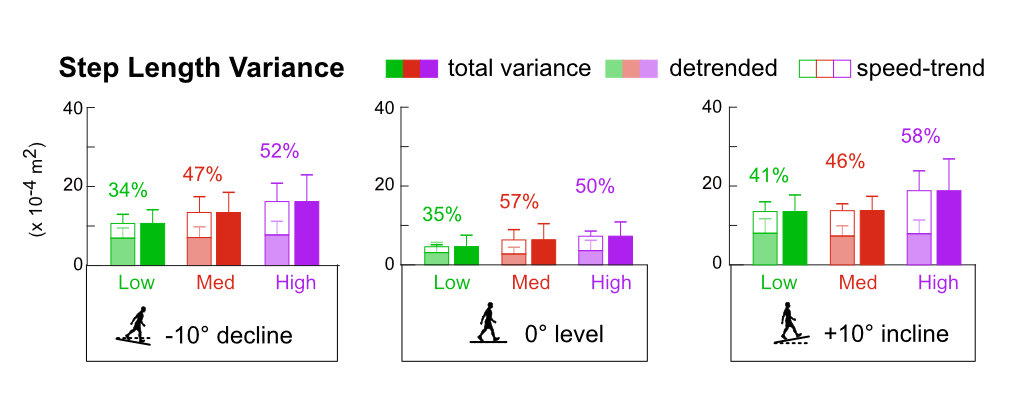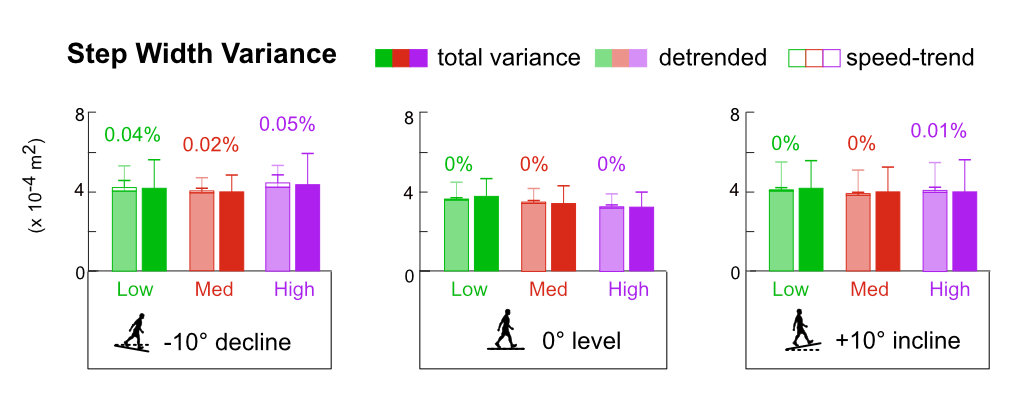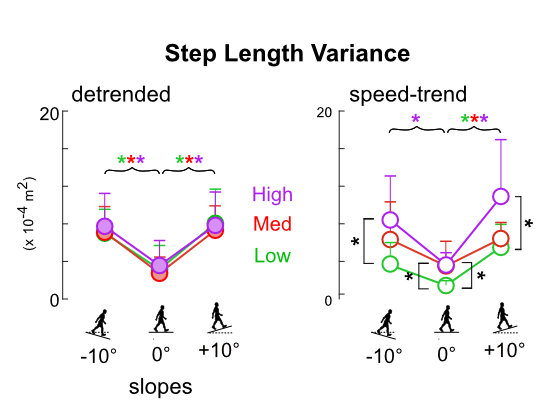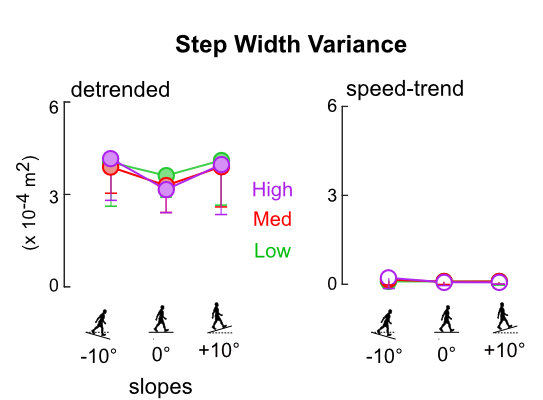Welcome to poster #578 and winner of the ASB President’s Award for the best poster!!
We hope this webpage looks like a traditional printed poster when viewed on a computer, but it also has interactive elements like flip boxes, videos, and filterable galleries that allow you to see subsets of plots. So, hover over items and click/tap/swipe on them. FYI, default features are the quick main takeaways, while additional details involve a click/tap/swipe.
Self-pace treadmill controllers influence gait variability but not average walking speed
Cesar R. Castano
Department of Mechanical and Aerospace Engineering
University of Central Florida
castanocesar@knights.ucf.edu
Helen J. Huang
Department of Mechanical and Aerospace EngineeringDisability, Aging, and Technology (DAT) cluster
University of Central Florida
hjhuang@ucf.edu
Purpose: To investigate how self-pace treadmill controller sensitivity affects walking speed, step length, and step width on different different slopes (decline, level, and incline).
Hypothesis: More sensitive self-pace controllers would have greater walking speed fluctuations, step length variability, and step width variability on all slopes.
Background
Self-pace treadmills allow subjects to walk at their chosen walking speed while preserving natural gait fluctuations [1,2].
Equipment availability, laboratory space, and experiment design have led to a variety of custom self-pace controllers with different parameters, which may influence a subject's gait.

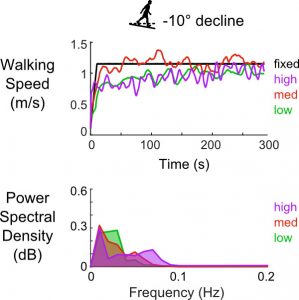
controller sensitivity did not affect average gait parameters but did affect gait variability
- All
- speed
- step length
- step width
- average
- total variance
Curly brackets indicate significant differences between slopes within a given sensitivity shown as color coded asterisks, * low, * medium, * high (Tukey HSD, p<0.05). Square brackets with black asterisks indicate significant differences between sensitivities within a slope (Tukey HSD, p<0.05).
detrended variances were similar regardless of self-pace controller sensitivity, but speed-trend step length variances increased with higher sensitivity self-pace controllers
- All
- step length
- step width
- sum variances
- stats
final thoughts
Increasing self-pace controller sensitivity:
- did not affect: 1) average walking speeds or gait parameters; 2) detrended variances; and 3) speed-trend step width variance
- resulted in increased 1) speed variance, 2) total step length variance, and 3) speed-trend step length variance.
Gait variability during self-pace treadmill walking included additional speed-related components that increased with more sensitive controllers, which may affect the interpretation of gait variability metrics.
acknowledgements
Supported in part by NIH R01AG054621 to HJH, Gerontology Research Award from the Learning Institute for Elders (LIFE) at UCF to HJH, and a UCF ORC Fellowship to CRC.





